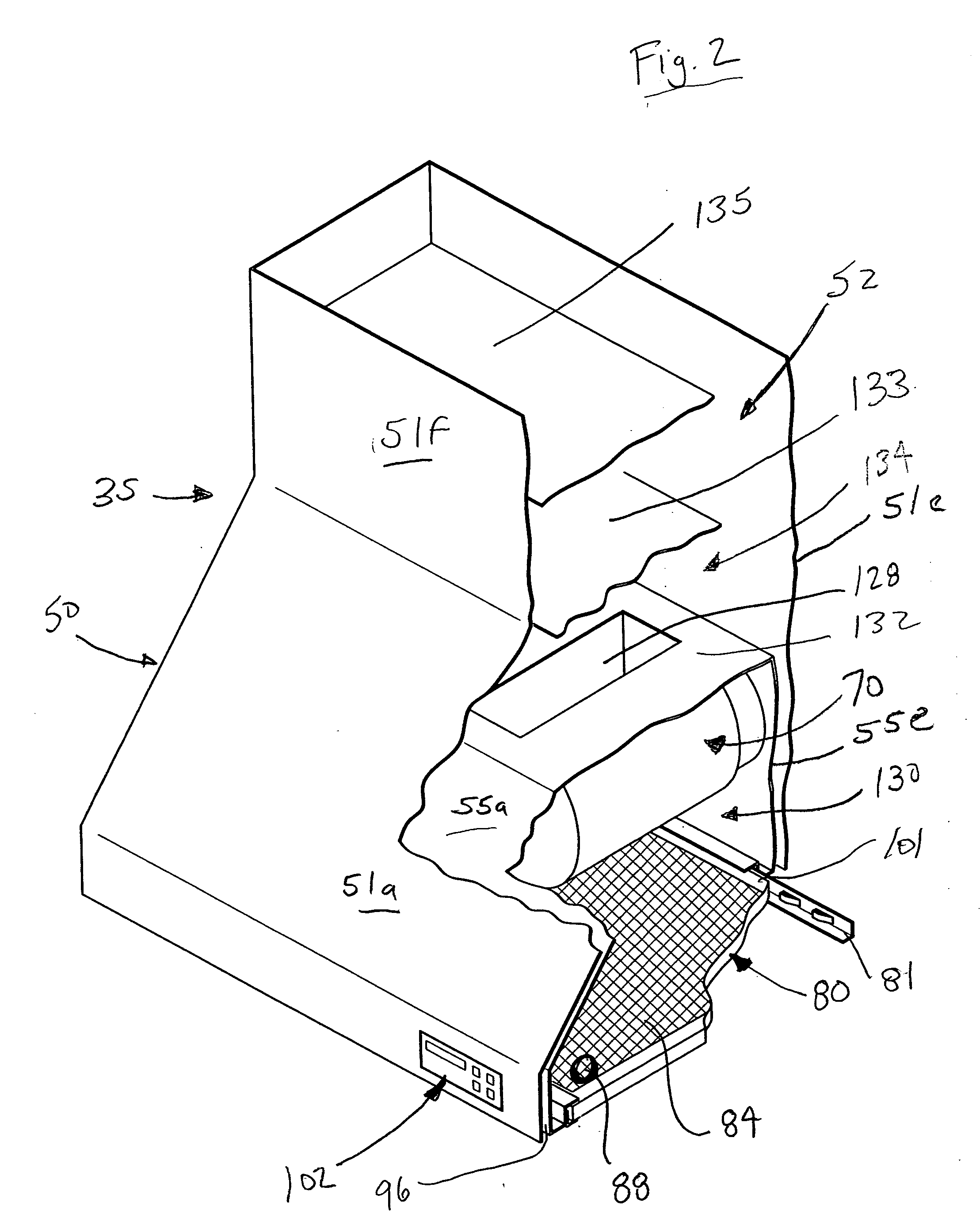Range hood
a range hood and hood technology, applied in the field of kitchen appliances, can solve the problems of increased noise, reduced output, and reduced effectiveness of the system, and achieve the effect of improving the operation of the range hood
- Summary
- Abstract
- Description
- Claims
- Application Information
AI Technical Summary
Problems solved by technology
Method used
Image
Examples
Embodiment Construction
[0037] The present invention and the various features and advantageous details thereof are explained more fully with reference to the non-limiting embodiments described in detail in the following description.
1. System Overview
[0038] This invention relates to the ability to remove contaminated air, moisture, effluents, grease, heated airflows, particulates, and high temperatures and return air that is cleaned and cooled. It also addresses and provides improvement as it relates to upflow range hoods. Also on non-ducted (ductless) upflow range hoods, this invention addresses the return of heated air. This invention covers the different kinds of range hoods like island, wall, chimney, and low profile types.
2. Detailed Description of Preferred Embodiments
[0039] Various embodiments of the present invention are shown in FIGS. 1-13 which are described in additional detail below.
[0040]FIG. 1 shows one preferred embodiment of the appliance 20 of the present invention. In this embodimen...
PUM
 Login to View More
Login to View More Abstract
Description
Claims
Application Information
 Login to View More
Login to View More - R&D
- Intellectual Property
- Life Sciences
- Materials
- Tech Scout
- Unparalleled Data Quality
- Higher Quality Content
- 60% Fewer Hallucinations
Browse by: Latest US Patents, China's latest patents, Technical Efficacy Thesaurus, Application Domain, Technology Topic, Popular Technical Reports.
© 2025 PatSnap. All rights reserved.Legal|Privacy policy|Modern Slavery Act Transparency Statement|Sitemap|About US| Contact US: help@patsnap.com



